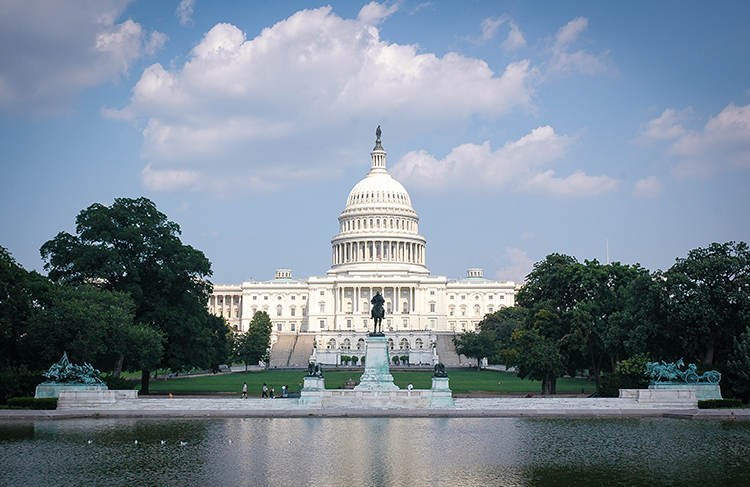
It’s well-known within dairy and all of agriculture that producers are proactive leaders in land and water stewardship. But that story is less known in Washington, D.C., where lawmakers provide policy incentives that help dairy farmers build on the significant work they have already done. After a summer of real National Milk Producers Federation (NMPF)-driven progress on Capitol Hill, dairy’s priorities are moving in the right direction.
The success comes from persistence that has broken through the charged political climate. It’s also come through the ability of NMPF and others to speak with one voice in support of the industrywide Net Zero Initiative. This unified voice has helped align congressional agriculture policy with dairy’s environmental goals of becoming carbon neutral or better by 2050 and improving water quality while optimizing water use.
Publicly, this summer saw continued public wrangling about when and whether to move forward with significant legislation, with greater emphasis on the differences between policymakers than on the potential areas of alignment that might help conclude important debates. But away from the national headlines, NMPF has been working with members of both parties to steadily develop momentum to enact policies to improve conservation programs to better meet dairy’s needs; spur adoption of innovative technologies and practices; and bolster emerging environmental markets.
The triple play of working examples
In August, NMPF led a dozen agricultural and conservation organizations in urging Congress to bolster existing farm bill conservation programs to target climate-smart practices, which hold major potential to help dairy farmers to further reduce emissions that studies show are already on the decline. Senate Agriculture Committee Chairwoman Debbie Stabenow continues to spearhead this legislative effort. It’s becoming likely that pending budget legislation will successfully enhance funding for these critical programs. This will better position conservation programs to support dairy producers as they implement new approaches to feed management and undertake advanced nutrient management practices.
Second, NMPF has built on its springtime success in fostering federal incentives toward innovative technologies and practices. After working to win language in the House’s 2022 agriculture spending bill to nudge the Food and Drug Administration to speed up approval of animal feed additives, NMPF then worked with a bipartisan coalition of members to secure dedicated funds to achieve this goal when the bill hit the House floor in July. After that bill was approved, NMPF subsequently worked with senators in both parties to secure both the policy directive and the needed funds in the Senate’s bill.
This momentum has carried over to the bipartisan, bicameral Agriculture Environmental Stewardship Act. This legislation, for which NMPF has led support efforts, creates an investment tax credit to cover 30% of the upfront capital costs of methane digesters and nutrient recovery systems. After advancing the proposal in the Senate this spring, we worked with House members to include key portions of the bill in a spending plan approved last month by the House Ways and Means Committee that’s poised to move ahead in Congress.
Third, Congress is continuing to delve into voluntary agricultural carbon markets. After the Senate overwhelmingly passed the Growing Climate Solutions Act in June, action shifted to the House, where its Agriculture Committee held a hearing to inform members on voluntary carbon markets in agriculture. The committee is now considering the next steps regarding the Growing Climate Solutions Act.
Bringing plans to completion
As the saying goes, it ain’t over til it’s over. Inside the Capital Beltway, that point is often stated as, “Nothing’s agreed to until everything’s agreed to.” Legislation is complicated, and loss of focus or a small mistake can make momentary successes quickly fade. But this year has provided an opening for NMPF to successfully pursue the key policy priorities needed to help make Net Zero a reality for dairy. NMPF is determined to bring these efforts to a successful conclusion.








